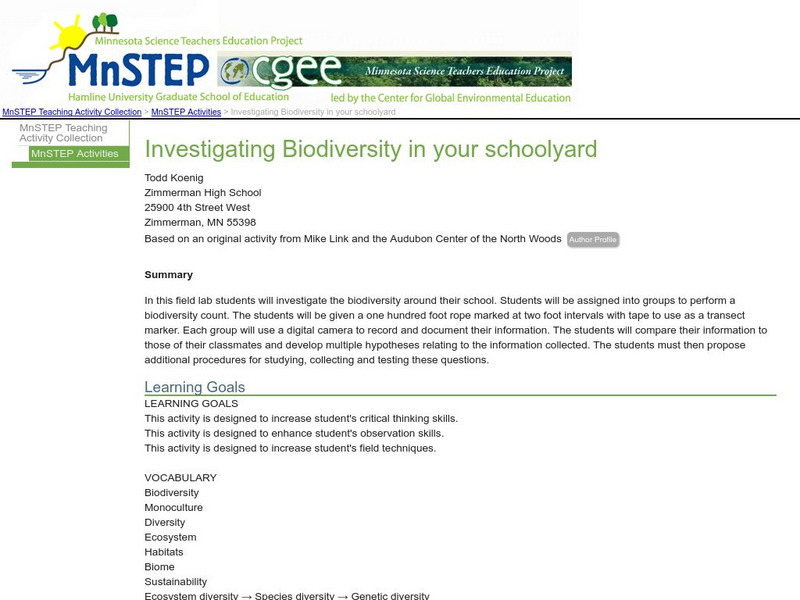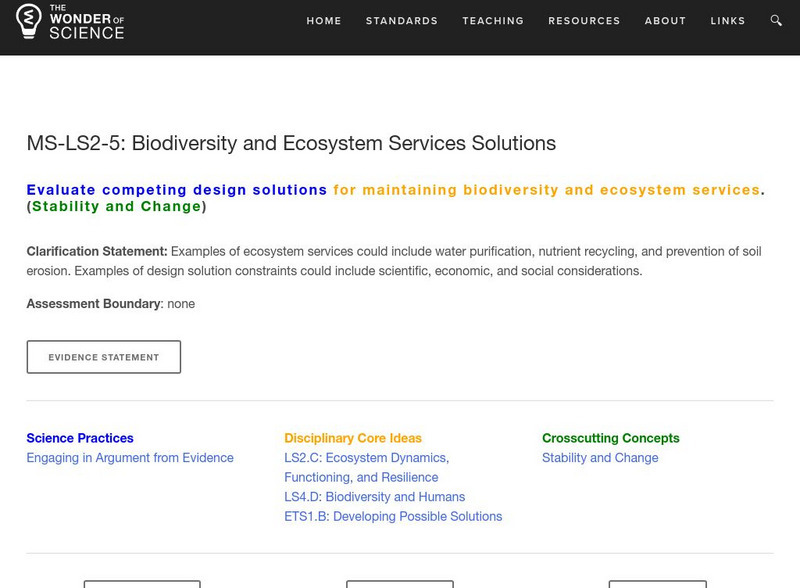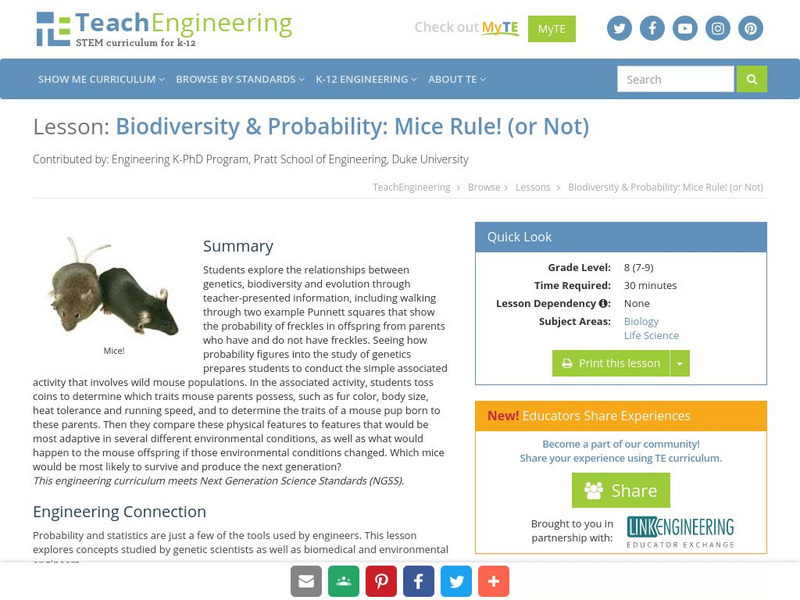Curated OER
Most Troublesome Exotic Invasive Plant Species Web Quest
Students participate in a Web Quest activity in which they identify common exotic invasive plant species of the Southern Appalachian Region. After identifying the top 10 exotic invasive species, they choose one to research in depth.
Curated OER
Coral Reefs Endangered
Learners research where in the world coral reefs are located. For this ecology lesson, students create food chains and food web. They simulate growing coral reefs to understand their characteristics better.
Curated OER
Exploring Climate Change with GIS
Students investigate climatological changes that are occurring to the Earth. For this climate change lesson, students access an assigned web site to view maps and lessons that show how climate change makes a difference to life on Earth.
Curated OER
Pheed the World: Edible Phyla
Students discuss the contributions of different organisms to our world. In this biology lesson, students research countries with limited food supply. They create an improvement plan for a fictitious country assigned to them.
Curated OER
Are You Related?
High schoolers study microsatellite markers and explain how they might be used to identify populations. They use data to make inferences about the populations of deep-sea corals.
Curated OER
Mountains in the Sea Exploration No Escape
Students study data to hypothesis about the influence of a water circulation cell on the retention of benthic invertebrate larvae in the area of a seamount. They investigate the positives and negatives of larvae retention in this series...
Curated OER
pH Readings and Salinity Readings of Water From Three Locations Within the Neponset River Watershed
Sixth graders test the ph levels of water from three different water environments within the Neponset River Watershed. They discuss the three different water environments, take pH measurements of the three samples, and predict which...
Curated OER
Natural Puerto Rico
Students explore the nature of Puerto Rico. They view a Power Point presentation on world population and discuss how Puerto Rico landscape differs from Wisconsin's landscape. They create a Venn diagram comparing the two and complete a...
Curated OER
The Trail of a Snack Food
Learners identify some of their favorite snack foods. Using this information, they discover the resources needed to produce the food. In groups, they research different alternatives to make their favorite food in order to protect the...
Curated OER
Exploring Fish Anatomy and Commercial Fishing Gear
Students investigate commercial fishing by exploring the technical methods. For this environmental lesson, students identify the fish that are most commonly consumed by humans and trace their path from ocean to plate. ...
National Geographic
National Geographic: Marine Ecosystems and Biodiversity
A collection of three lessons where students learn about abiotic factors in marine ecosystems, about marine food chains and biodiversity, and about marine food webs and trophic levels. Includes handouts, website links, and a vocabulary...
Other
Illinois Department of Natural Resources: Illinois Biodiversity Basics [Pdf]
A 185-page collection of activities for learning about biodiversity in Illinois, that can easily be adapted for other places.
Biology Corner
Biology Corner: Biodiversity of Ponds
In this lesson plan site, students will observe and record data on three ponds. The goal is to identify the types of organisms in each pond and prepare a report that delves into the biodiversity of each site. Links to videos about pond...
Alabama Learning Exchange
Alex: Biodiversity: Local Ecosystem & Food Web
This is a hands on lesson in which students will explore their local community to identify living things. It can be used as part of a unit on biodiversity and energy transfer within a biology, zoology, or environmental science course, or...
Science Education Resource Center at Carleton College
Serc: Investigating Biodiversity in Your Schoolyard
In this field lab, students will investigate the biodiversity around their school and record and document the information they find. The students will compare their information to those of their classmates, develop multiple hypotheses...
Science Education Resource Center at Carleton College
Serc: Simpson's Reciprocal Index: Identify and Compare Habitat Biodiversity
In this biology field lab, students will collect insects from two different habitats and use them to quantify the biodiversity of each habitat.
Science Education Resource Center at Carleton College
Serc: Using Plant Surveys to Study Biodiversity
An extended field investigation intended as launch into several concepts in environmental science including biodiversity, human impacts on natural systems, and energy transfer in ecosystems.
National Geographic
National Geographic: Marine Ecosystems and Biodiversity
In this unit students explore major marine ecosystems by locating them on maps. Students use marine examples to learn about energy transfer through food chains and food webs and then they discuss how food webs can illustrate the health...
Science Education Resource Center at Carleton College
Serc: Using Benthic Marcoinvertebrates to Determine Biodiversity in a River
In this investigation of macroinvertebrates, students will build rock baskets and place them in various parts of a river to collect insects. Students will group insects according to their pollution tolerance and use the PTI to determine...
The Wonder of Science
The Wonder of Science: Ms Ls2 5: Biodiversity and Ecosystem Services Solutions
Work samples, phenomena, assessment templates, and videos that directly address standard MS-LS2-5: biodiversity and ecosystem services solutions.
ReadWriteThink
Read Write Think: Building Word Knowledge Through Informational Websites
A lesson through which students identify, understand and work with important vocabulary words found in an online article on biodiversity. Based on the "Ten Important Words Plus" strategy that teachers can employ as part of vocabulary and...
Nature Conservancy
The Nature Conservancy: Gardens Activity Guide: Habitats
In this lesson students learn how the garden provides habitat for a variety of different animal species. They make observations and collect data to determine which species inhabit the garden. They will investigate relationships among...
TeachEngineering
Teach Engineering: Mice Rule! (Or Not)
Students explore the relationships between genetics, biodiversity, and evolution through a simple activity involving hypothetical wild mouse populations. First, students toss coins to determine what traits a set of mouse parents...
Science Education Resource Center at Carleton College
Serc: Minnesota Tree Blitz
This activity serves as an introduction to tree identification and helps students learn about the natural world around them. While exploring trees of Minnesota, students will recognize biodiversity of trees and learn how to observe,...
Other popular searches
- Biodiversity and Ecosystems
- Biodiversity in Forests
- Biodiversity Loss
- Insect Biodiversity
- Great Lakes Biodiversity
- Marine Biodiversity
- Biodiversity of Fish
- Climate and Biodiversity
- Global Biodiversity
- Hall of Biodiversity
- Biodiversity in Utah
- Biodiversity Bingo
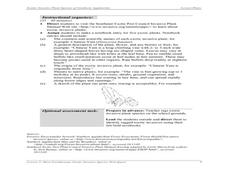

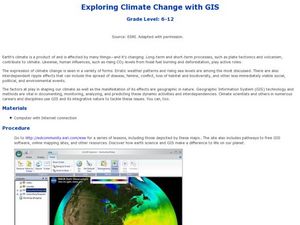






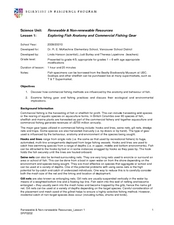

![Illinois Department of Natural Resources: Illinois Biodiversity Basics [Pdf] Lesson Plan Illinois Department of Natural Resources: Illinois Biodiversity Basics [Pdf] Lesson Plan](https://d15y2dacu3jp90.cloudfront.net/images/attachment_defaults/resource/large/FPO-knovation.png)

